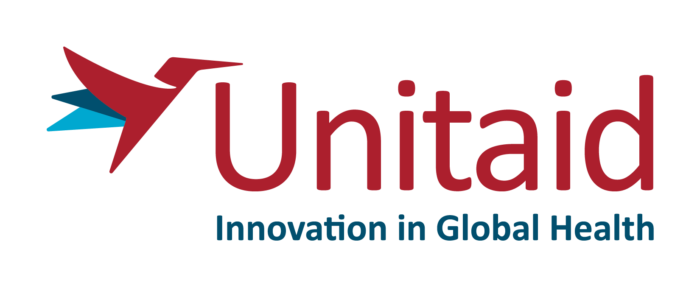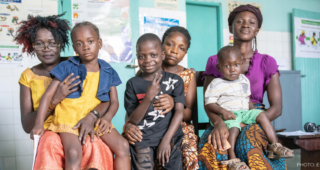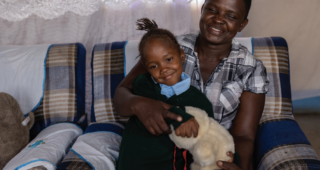Catalyzing Pediatric TB Innovations
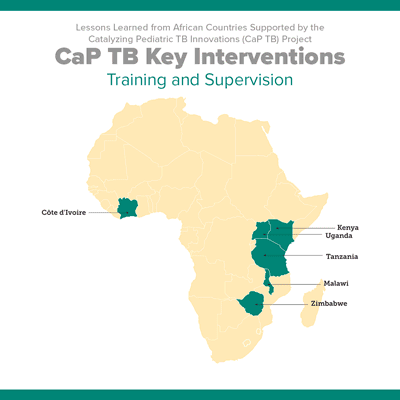
The Catalyzing Pediatric TB Innovations (CaP TB) project, funded by Unitaid, aimed to improve pediatric TB care. The project focused on developing and implementing models to improve case detection for active pediatric TB and improve access to TB preventive treatment (TPT).
Implemented across nine sub-Saharan African countries between 2017 and 2021, the lessons learned from this project will catalyze the fight for a TB-free generation.
Download the Lessons Learned Report
Lessons Learned
Training and Supervision
- On-site trainings have the potential to reach a wider range of HCWs with minimal service interruptions in the health facilities, reduce costs, and make it easier to conduct practical sessions.
- Supervision tools and quarterly TB data were found to be useful in assessing the competencies of HCWs and CHWs, identifying training needs, and providing timely interventions for identified gaps.
- Continued coaching and mentorship of HCWs and CHWs contributed to the enhancement of clinical confidence of HCWs in managing childhood TB and a decreased loss to follow-up of clients through community support.
- Using dedicated trainers and mentors from MoH was found to be a cost-effective and sustainable approach for conducting and cascading trainings and providing supervision because the trainers were existing MoH staff who specialized in training.
Facility-based Pediatric TB case finding
- Adequate mapping of child entry points and proper screening for TB symptoms contributed to pediatric TB case finding.
- Integration of pediatric TB screening in non-TB entry points is feasible and improves identification of pediatric presumptive TB cases and, subsequently, increases TB case detection.
- The introduction of new screening and recording tools prompted HCWs and CHWs to conduct more systematic screening.
- The provision of supportive staff such as cough monitors and volunteers was perceived as a useful intervention to ease the workload of HCWs and improve TB case finding in children.
- TB screening of children can be performed by lay workers such as CHWs, volunteers, and other staff when appropriate and user-friendly screening tools are made available
- Systematic screening may be perceived as additional work by some HCWs, and it is important to identify challenges and seek ways to mitigate them.
Diagnosis of TB in children
- Treatment decision trees for pediatric TB put in place by CaP TB optimized case detection.
- Training and on-site coaching as well as regular site support and supervision are critical to build HCW confidence in clinically diagnosing pediatric TB.
- Provision of free diagnostic services for children through a voucher system to cover CXRs, diagnostics, and transport costs was a catalyzing factor that improved pediatric case finding in most countries where universal health coverage for children under 5 years of age is not yet a policy. This incentivized parents/caregivers to bring their children in for further investigation.
- Access to CXRs at lower levels of care, such as PHCs, allows HCWs to clinically diagnose TB cases in children.
- Enhancing the confidence of HCWs through training and infrastructure for CXR reading and interpretation contributed to increased numbers of clinically diagnosed cases of TB in countries such Kenya.
- Implementation of advanced sample collection procedures contributed to improved use of Xpert testing.
- An efficient and functional GeneXpert hub with appropriate biological samples improved the proportion of bacteriologically confirmed cases among those diagnosed with TB.
- Due to staff turnover and retention, it’s important to train as many HCWs as possible on diagnostic procedures for pediatric TB as a remedial plan.
Contact investigation at facility and community level
- Accessibility of EGPAF project staff and technical support provided by EGPAF were considered to be factors that contributed to improved TB case finding in children. This was mainly expressed by participants from Côte d’Ivoire, Lesotho, and Kenya.
- Involvement of community leaders and members in raising awareness about TB improved acceptance of contact investigation.
- More advocacy activities are needed to raise awareness on childhood TB prevention.
- Improved communication mechanisms between CHWs, health facilities, and local leaders will ease contact investigation at the community level.
- Strong collaboration between medical staff (i.e., nurses, medical doctors, etc.) and CHWs is critical for success and good performance of contact investigation.
- Development of job descriptions and responsibilities for medical staff and CHWs allowed efficiency and synergy in service provision and increased involvement of site management.
- Transport fee assistance and logistical support for CHWs is key to improved household contact investigation.
- Contact investigation made very early (a maximum of three days after the TB case confirmation) by well-trained staff improved contact
- Due to the economic status of patients and geographic limitations to contact investigation, patients should be supported to cover the transport cost and some diagnostic lab tests. Subsidized transport of household contacts to health facilities can improve the uptake of TB case finding and TPT initiation in children.
- Use of specific registers for contact investigation and TB presumptive case identification allow for better tracking of the contact investigation cascade and follow-up of children eligible for preventive treatment or requiring TB investigation.
- Dedicated and trained human resources (either HCWs or CHWs) are key to successful contact investigation.
- Increasing the number of CHWs/CHVs can improve the reach of these lay workers in conducting contact investigation in the community.
- Community contract tracing was used as an opportunity to screen for other conditions such as malnutrition, HIV, and others, mainly in Uganda. Such a broad perspective and approach to community contact tracing could be a great opportunity for early detection of other health conditions in children.
Integration of TB/HIV services
- Promotion of one-stop-shop model, where all TB services are provided at the HIV unit or ART clinic, proved to be useful in minimizing loss to follow-up of patients and missed opportunities for screening.
- The use of the project’s pediatric TB form to screen, identify, and refer eligible children living with HIV for TPT allowed an increase in TPT coverage. There is, therefore, a need to implement additional screening tools (similar to the pediatric TB form) to complement current tools or adapt existing registers to include data elements on TB.
- The adaptation of existing registers to include data elements on TB/HIV collaborative activities enhanced integration.
- The use of CHWs trained in TB/HIV for TB screening reduced the workload on HIV Units / ART clinic teams which created an environment of enhanced TB/HIV integration.
- By escorting patients and their caregivers, CHWs and TB linkage facilitators strengthened the linkage of presumptive TB cases to laboratories for HIV and TB testing and to TB clinics for treatment.
- Use of a quality improvement approach (including data use, mentorship, and coaching) motivated site teams to track and develop innovations to address barriers/challenges related to integration of TB/HIV services.
TPT and the introduction of shorter regimen
- Good stock management and a continuous supply of TPT drugs contributed to good adherence rates. To ensure good TPT treatment outcomes, countries should improve their drug management systems and ensure consistent supplies of TPT drugs.
- Provision of multimonth drug dispensing was an enabling factor to improve adherence, especially in the context of COVID-19 and among nomadic people. This approach should be considered in scaling up the CaP TB project.
- The short duration of the new TPT regimen and the good flavor of the medication contributed to good TPT adherence.
- The positive impact of coaching and supervision created an enabling environment for the uptake of TPT. Continuous coaching and supervision support are needed to improve the knowledge and confidence of HCWs in TPT management in children, especially in countries such as Lesotho where fear of drug resistance was a concern among HCWs.
- Strengthening community linkages for creating awareness of TPT for children was also perceived as a contributing factor in the increased TPT uptake. Support groups led by parents with children on TPT helped to enhance parents’ knowledge and trust about allowing their children to begin TPT or TB treatments, and providers connected parents to these groups. This contributed to increased awareness in the community. The multidisease campaign at the community level allowed the pop
Outcomes

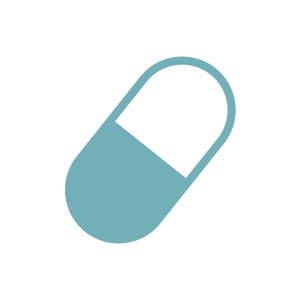

Reports and Research
Unitaid is a global health agency engaged in finding innovative solutions to prevent, diagnose and treat diseases more quickly, cheaply and effectively, in low- and middle-income countries. Our work includes funding initiatives to address major diseases such as HIV/AIDS, malaria and tuberculosis, as well as HIV co-infections and co-morbidities such as cervical cancer and hepatitis C, and cross-cutting areas, such as fever management.Unitaid is now applying its expertise to address challenges in advancing new therapies and diagnostics for the COVID-19 pandemic, serving as a key member of the Access to COVID Tools Accelerator. Unitaid is hosted by the World Health Organization.
